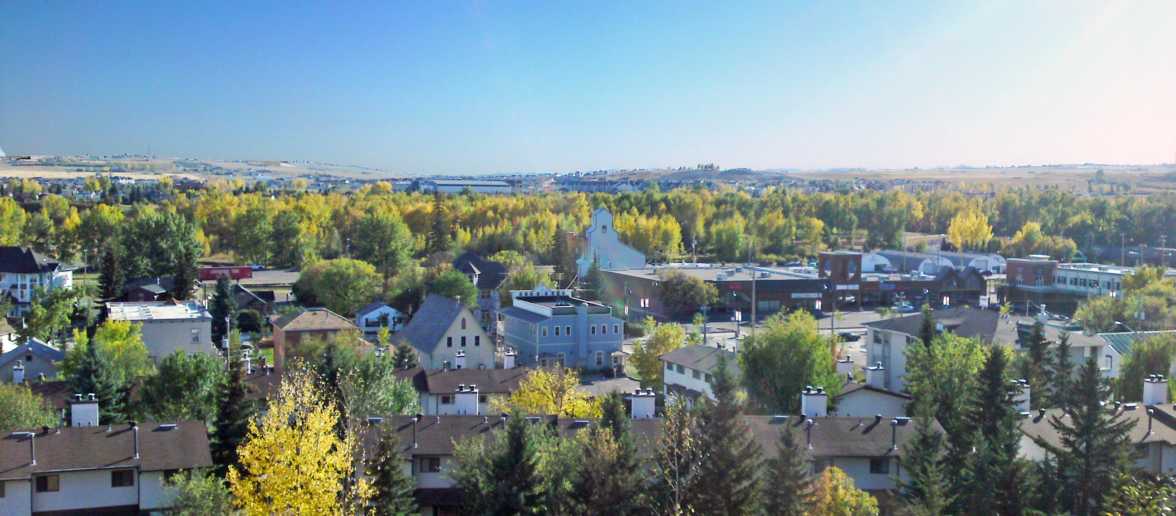
Water works in Okotoks: Lessons from a small, fast-growing Canadian town
Smaller Canadian municipalities face unique challenges when it comes to sustaining healthy water and wastewater systems. To reduce the pressure, many of them are taking multi-pronged approaches to conservation and cost recovery. As we discuss in our latest report, well-designed user fees (i.e., water rates) are effective at curbing water use, but they’re not the only tool. Today we look at Okotoks, Alberta, a town that exemplifies Best Practice #10 in our report: using tools that complement water and wastewater user fees.
Bubble burst
In smaller communities, many of the challenges that an average Canadian city face go under the magnifying glass. These towns typically have less financial capacity to build essential infrastructure, and less managerial and technical capacity to manage it once it’s built. When it comes to water and wastewater, even the basics – like developing an asset management plan or installing water meters – can be insurmountable without outside help.
Few have felt the pinch like the Town of Okotoks. Since 2001, Okotoks’ population has ballooned from 11,700 to 29,000. Rapid growth has strained the town’s municipal services, water and wastewater systems included.
Over the last 15 years, Okotoks has made a sizeable effort to curb its water use and improve the sustainability of its water and wastewater systems. Their innovative blend of user fees and other, non-pricing policies is yielding positive results for both cost-recovery and conservation.
A sharp drop
The decline in Okotoks’ per-capita consumption is striking. They met their long-term goal of 285L/capita/person in 2013 – ahead of schedule. As a result, Okotoks did not have to purchase additional water on Alberta’s water market, resulting in $11.8 million in avoided costs.
Source: Okotoks CEP Plan, 2014
This sharp drop in Okotoks’ per-capita water consumption is a result of robust planning. The town released its first Water Management Plan in 2002 and updated it in 2014 to accommodate 30,000 people. Okotoks now has 29,000 residents, so additional efforts are underway. For example, Okotoks will soon link their local water system with Calgary’s to ensure a steady and affordable supply as they continue to grow. The town is also in the middle of revising its water rates to ensure they find the seam between stringent pricing and well-designed complementary policies.
Cranking the dial on user fees
Okotoks’ water and wastewater rates reflect the costs of rapid system expansion and the need to curb consumption. They have a carefully designed mix of flat fixed fees, increasing block rates for water (water gets more expensive per unit the more you consume) and flat block rates for wastewater (wastewater is the same price per unit no matter how much you produce).
In recent years, Okotoks has focused on increasing its fixed rates to ensure revenue stability. Between 2014 and 2017, fixed fees for water increased by 31% per year (now $7.33 per month). Block rates increased by a more modest 3.8% per year.
Getting smart about metering
Metering is essential to implementing user fees, but Okotoks has taken things a step further. Households and businesses have had meters since the early 1990s, and their smart metering system is now 90% implemented. We cover the benefits of metering and smart metering in another blog, but Okotoks’ program is especially notable given its small population. Water meters have helped reduce its system leakage rate to just 5%; leakage rates in most cities, large or small, hover around 15%.
As part of their smart metering program, Okotoks provides consumption data to households. This gives users real-time feedback on their consumption habits, which research has shown can positively affect behaviour.
Genuine complements
Okotoks also has a suite of other policies that improve awareness of non-essential water use. These policies help underscore the value of water, not just the cost.
Some of Okotoks’ most novel non-pricing policies relate to urban planning and development. They focus on maximizing water productivity, helping reduce the amount of water businesses and residents need to draw from the system. New residential property construction, for instance, must have at least 12 inches of topsoil to maximize water retention, help manage stormwater and reduce the need for lawn watering.
Underpinning many of these initiatives is public education. Citizen engagement is vital to the success of these programs, and Okotoks is leveraging its smaller size to ensure that residents are aware of the importance of conserving water and taking care of their infrastructure.
Local leadership
Our report shows water is a national issue that can be addressed at the local level. Okotoks’ efforts show that leadership on water policy need not be left to Canada’s big cities. Lessons abound here for municipalities of all sizes. Okotoks’ vision for a regional system, strong mix of user fees and complementary policies, and public education efforts should have similarly-sized towns watering at the mouth.
Online course: Municipal market-based tools for sustainable development Sign up now for this new and unique Ecofiscal course, designed for municipal employees. Launching Fall 2018!





Comments are closed.